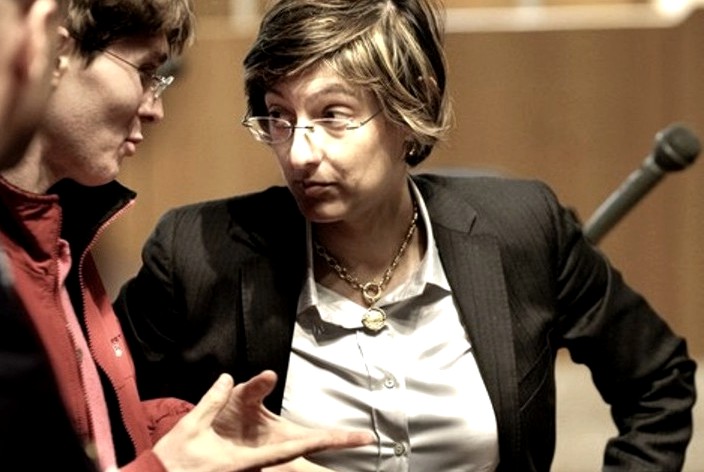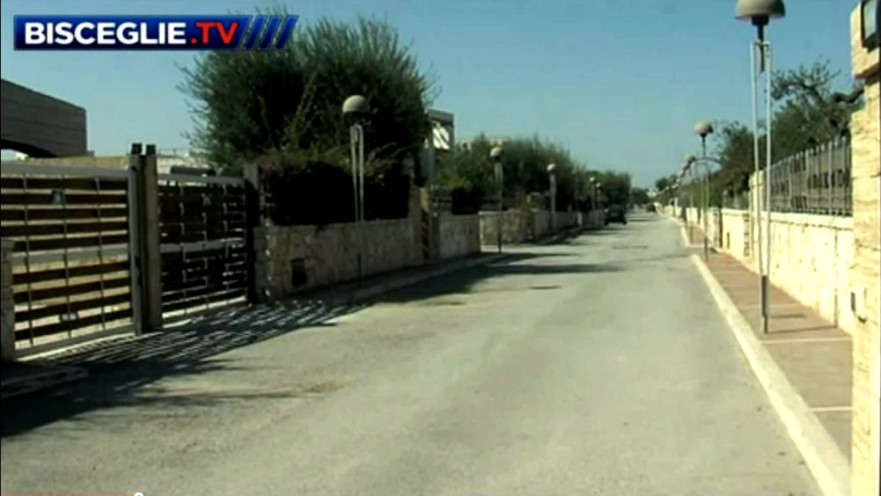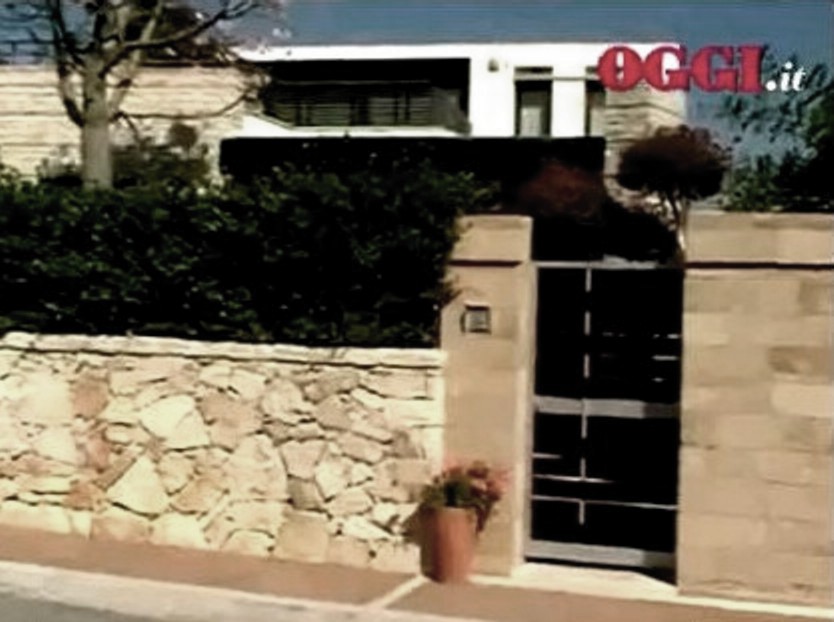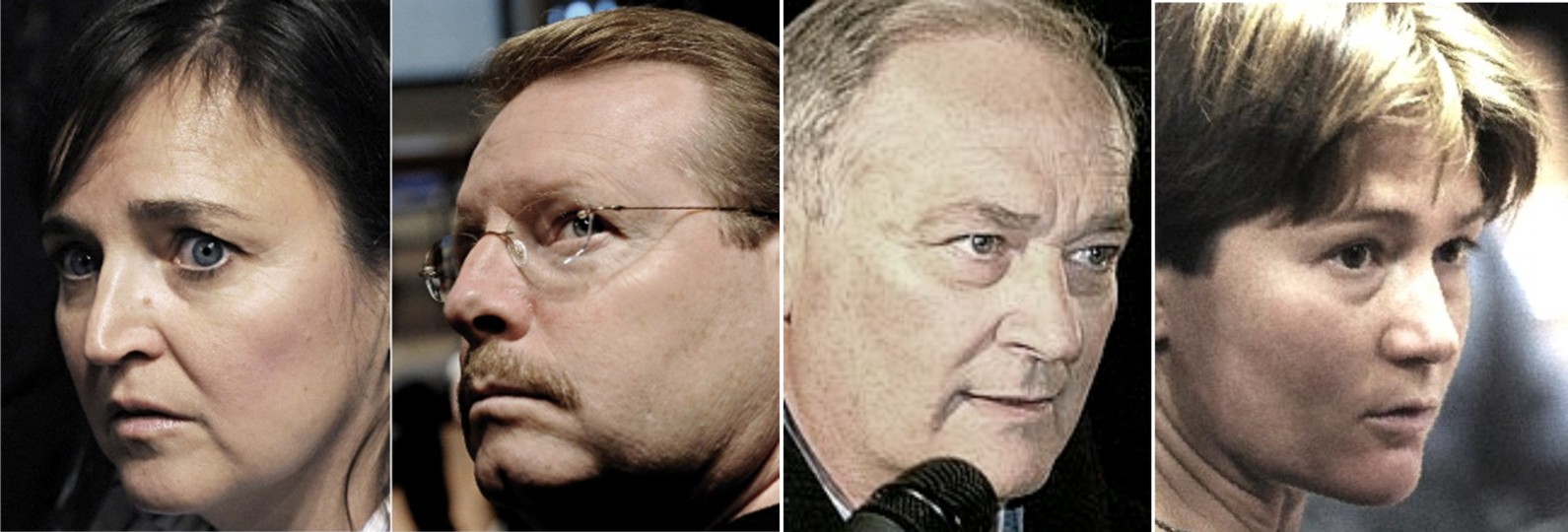
Category: Raff Sollecito PR
Thursday, March 29, 2012
Why Didn’t Giulia Bongiorno Fight A Lot Harder - For Meredith Kercher, The Real Victim Here?
Posted by Peter Quennell
1. Bongiono as proponent for female victims
Sollecito lead lawyer and parliamentarian Giulia Bongiorno is persistently prominent in the Italian news.
Here she is captured by paparrazi while walking her baby son Ian around Rome. She is also in the news a lot for her political activities as a former senior member of the party of Silvio Berlusconi and possible future mayor of Palermo Sicily.
And she is fighting hard in court and the media for the interests of the passengers who were on the wrecked cruise ship Costa Concordia, and for the families whose loved ones died.
She also runs a group called Double Defense with Italian-speaking Swiss supermodel Michelle Hunziker (images of both above). Michelle just got engaged to the Italian fashion heir Tomaso Trussardi so she also is a lot in the news.
To raise funds for Double Defense they just co-hosted a glittering gala event in Milan. Many of Italy’s richest and most famous attended. Lots of money was raised.
So what is Double Defense?
Giulia Bongiorno and Michelle Hunziker founded Double Defense specifically to tilt the law and the courts more toward women who are the victims of violent crime. As Barbie Nadeau reports, that is much needed in Italy right now.
This description of Double Defense is from the Italian website Beautiful World.
Double Defense aims to help women who have suffered and are suffering domestic violence, physical or psychological, through assistance in the interpretation of the rules and regulations in force.
In addition to that the non-profit organization, born from a chance encounter between the Swiss showgirl and Bongiorno the lawyer, wants to raise awareness of this terrible phenomenon, promote a culture of nonviolence, and prevent passive acceptance and silence from being the only refuge of those who suffer such terrible and barbaric mistreatment.
There are many names known and loved who have decided to put their fame at the service of Double Defense. Anna Tatangelo, Federica Pellegrini, Francesco Totti, Nek, Ilary Blasi and Silvia Toffanin are some of the celebrities who support the non-profit organization which was created by the duo of Hunziker and Bongiorno. .
The Foundation has a new partnership with the Italian brand Pandorine. Co-promotion will include a new marathon and relay race in Piazza Castello, and a special type of bag that is symbolically called Women: completely white, perfect for summer, and bearing a meaningful and touching inscription…
2. Female victim here be damned
We wonder. Did it never occur to Giulia Bongiorno that one of the most prominent women victims in many years was in fact Meredith Kercher? A victim of a cruel and gratuitous murder? Seemingly the MOST deserving victim for Bongiorno to wage a fight for?
Maybe the answer was yes - back at trial in 2009.
Sollecito’s father seemed to have wanted to retain Ms Bongiorno because of her political clout, from wiretap mentions made public which seem to show zero belief in Sollecito’s innocence. Ms Bongiorno often seemed disinterested at trial, and even disappeared or failed to show once or twice.
She seemed from photos in court to have poor chemistry with Raffaele Sollecito, and we heard that both she and Luciano Ghirga were so disbelieving in the innocence of their clients and so irritated at the PR that they might walk and leave Knox and Sollecito to find new defense counsel.
But in 2011 we saw something entirely different.
During the first appeal under Judge Hellman, Ms Bongiorno seemed to have other things on her mind than the truth of her client’s guilt or innocence, or the fact that the victim in this case, was a super-achieving woman. Meredith’s family being in another country, with few resources of their own, helped to enable an arrogant callousness.
She presumably could have used a win right about then against the justice system of Italy, in support of the beleagured PM Berlusconi, and she may have had (and still have) on her mind that run for the office of mayor in Palermo, Sicily.
Who knows what else might have been on her mind? But in 2011 she certainly mounted a scorched-earth, take-no-prisoners defense of Raffaele Sollecito, and the female victim Meredith be damned..
Bongiorno introduced the bizarre witnesses Alessi and Aviello to discredit Rudy Guede, and one of them (Aviello) openly claimed that he had committed perjury because bribes were being offered in his prison in exchange for testimony helpful to Sollecito. (That is still being investigated.)
Ms Bongiorno also went to remarkable lengths, with witness after witness after witness, to discredit Antonio Curatolo, the claimed observer of Knox and Sollecito in the park. Impartial lawyers think that Curatolo did still emerge as having seen something on the correct night, but he was now openly tarred as a heroin dealer, and in his report Judge Hellman displayed suspicion towards all of the witnesses.
Ms Bongiorno’s performances at trial and at appeal were like night and day.
3. Bongiorno as contemptible hypocrite
So two people who Ms Bongiorno may have always disbelieved and had little time and respect for presently walk free. While the precise kind of victim Bongiono now claims to go to bat for is simply shrugged off, with absolutely no sign of her caring.
Obviously not all women victims in her eyes are equal. Winning at all costs no matter the hurt is what she is really about.
Sunday, March 18, 2012
Could A Growing Asymmetry Between Raffaele And Everybody Else Be Ensuring No Sleep In Seattle?
Posted by Peter Quennell

[Louise Burke, Jen Bergstrom, and Tricia Boczkowski, top editors at Sollecito publisher Gallery Books]
Amanda Knox seems to have had a history of putting her foot in it and then (sometimes) when she realizes it she tries to make amends.
That seems to be the arc of her Berlin experience where she upset people by quitting a plum intern job at the parliament after a day and then retroactively at least worrying about it. That may have been what she was doing at the first meeting with her parents in Capanne prison when they very quickly shushed her up.
Meredith seems to have found Knox hard to take with her noise and grubbiness and sharp elbows and general pushiness. But Amanda Knox was losing her few new friends in Perugia fast, and possibly her job in Patrick’s bar, and Meredith seems to have fatefully banked on Amanda Knox coming full circle soon.
There are instances recorded almost to the end where they both seemed to try to get along, although Meredith may have brushed Knox off on Halloween night when Knox made unanswered calls, maybe to ask if she could tag along.
Enter Sollecito.
Seemingly a classic loner with no close friends in Perugia, no previous genuine deep relations with girls, apparently no prior sex, a year or two behind the rest of his class in completing his degree, with serious time given to beastie porn and Japanese anime and Japanese manga. Believed to have had a history of cocaine use with some incident on record back in Bari. Loves knives.
Seemingly forever kept on a very short string by his father, who called him on the phone at least once daily, and who made sure to keep his son’s bank balance on a level with Raffaele’s legitimate monthly expenses.
Seemingly already nervous prior to Meredith’s death that Amanda Knox might soon dump him. That after less than one week.
Our Italian poster ncountryside translated these statements by Dr Sollecito which seem to show Francesco trying hard to get a grip over his slippery son.
From a family conversation recorded in Capanne prison
And then this f@cking knife that you carried back and forth .... I told you about leaving it at home .... You’re an idiot from this point of view .... aren’t you? .... and then the f@cking point that you could have avoided the [marijuana] joints .... You promised a few years ago about it, didn’t you? You gave us your promise, to me and to your sister that you would not have used them again, and instead you have not given a f@ck .... is that clear?”
From another family conversation recorded in Capanne prison
If the investigators are finally realizing what the real dynamics of the matter is ... automatically understand that you have nothing to do with [rude in italian] ... Do you understand? ... Amanda can be more or less involved in this matter ... more or less I do not know and do not give a damn ...
She will know something ... precisely ... especially considering all the versions that she has given, maybe she has not told the right one because she was worried about what this character the little negro [i.e. Patrick Lumumba] has managed to do, something like that ... do you understand what I mean? ... But you have nothing to do with [rude in Italian] ... and they understood ... now this morning or Monday there will be also the checking of your computer ... they have already cloned the hard disk ..
If Amanda was home ... if she was out, wtf were you doing? ... were you at the computer? ...... We cannot understand, this [=AK] within three days, when she went to the questura ... she has four to five different versions ... she has pulled in the little negro a@@hole ... Is a strange personality this girl, isn’t it?.
In his second and third alibis Sollecito definitely seemed to throw Knox under the bus.
It was only after hearing of Sollecito’s second alibi from police interrogators that Knox headed off down the slippery slope that now results in a confirmed three-year sentence for her and calunnia trials for both herself and her parents.
It was right then that Knox pointed the finger at Patrick Lumumba, in her own second alibi when still only a witness.
Upon his release by Judge Hellman, Raffaele Sollecito adopts a high and surprisingly jubilant “catch me if you can” profile not dis-similar to that which has been the downfall of many a psychopath throughout history.
He goes on national TV and avoids all the hard questions and he bristles with narcissistic bravado. He makes several statements about himself and Knox from his seclusion in Bisceglie north of Bari, which his father then publicly tries to pull him back from.
A seemingly naive ghost-writer, Andrew Gumbel, is invited in to capture Sollecito’s immortal thoughts, and he seem to have instantly started to mirror Sollecito’s extreme bravado.
More or less the opposite of the cautious, subdued book approach of the Knox camp. Although she may not have wanted this, Amanda Knox will be tied forever to Sollecito in the opportunistic, self-serving title: “Presumed Guilty: My Journey to Hell and Back with Amanda Knox”.
Book announcements are totally mute about all the legal trouble headed down the pike toward himself and Knox and their two families. The publisher’s announcement makes this inaccurate statement:
“Sollecito was an unwilling participant in a case that riveted the world. The Italian media convicted the young couple before any evidence had even been heard,” Gallery Books said in a statement. “Over and over, Sollecito came under pressure to change his testimony and get himself off the hook, but he refused to betray Amanda and he refused to lie.
“In “˜Presumed Guilty,’ Sollecito will finally tell his side of the story “” from his first meeting with Amanda Knox, to his arrest, prison time, subsequent release, and current relationship with the woman he stood by through the worst ordeal of both their lives.”
Really?! No, in fact Sollecito threw Amanda Knox under the bus as soon as he was leaned on, in his alibis two and three. He left her under the bus throughout the whole trial. Even after she rather desperately reached out to him in Capanne prison. And he lied again and again and again. Besides:
- Sollecito seems to show no concern at all that Perugia’s formidable chief prosecutor Dr Galati has filed a devastatingly strong appeal with the Italian Supreme Court.
- Sollecito seems to show no concern at all over his own family’s upcoming trial or the fact that they might end up in prison (which could cause his father to lose his medical license).
- Sollecito seems to show no concern at all that, for over-vigorously trying to defend him, his sister Vanessa has now permanently lost her plum job with the Carabinieri.
And now? Well, now there is a new report from the UK press, which seems to keep stringers permanently on the ground in Seattle and may have a direct pipeline to the Knox-Mellases. The report includes this:
Amanda’s new boyfriend, musician James Terrano is understood to be unhappy about Raffaele’s arrival.
James Terrano has himself been very cautious. He is unlikely to have let that damning remark leak out without a heads-up to Amanda Knox and her family. This seems yet another sign that the secret Seattle meetings are not simply a lovefest.
Both families seem to be struggling with a loose cannon called Raffaele.
Wednesday, March 14, 2012
Rome Appeal Court Rejects Vanessa Sollecito’s Appeal For Reinstatement In The Carabinieri
Posted by Peter Quennell
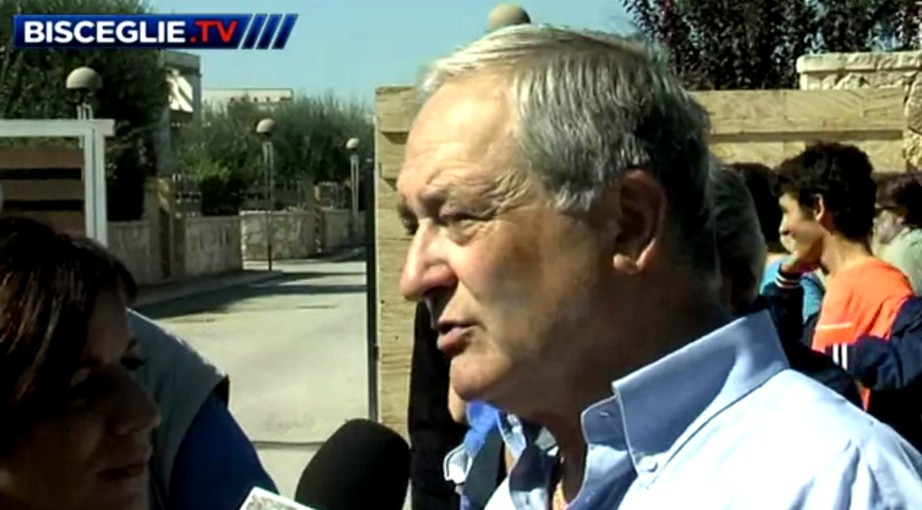
[Above and below: Francesco, father of Vanessa and Raffaele, outside their Bisceglie family home late 2011]
In 2008 Vanessa Sollecito and her father Francesco were caught on tape discussing the manipulation of Rome politicians into forcing changes upon the investigation team in Perugia.
Vanessa was fired from the Carabinieri the prestigious Italian national civil-military police force in November 2009 for demonstrating behavior and psychology inappropriate to a law enforcement officer’s job.
Our Italian poster ncountriside has just alerted us to the posting of the official statement that her appeal has been turned down.
The European Court is quoted in that report as confirming that national members have the right to fire official staff for psychological and behavioral cause.
The Carabinieri carried out a very thorough investigation which included the secret bugging of her mobile phone and her father’s phone. Jools translated one key conversation here. Her father suspects they are being bugged by the police but she blithely talks on, digging them in deeper.
This ruling was probably posted when Vanessa Sollecito was already in the air bound for Seattle (see the post below) but she would have known it was coming. This does not bode well for the criminal trial she faces along with her close family, possibly starting in Bari at the end of this month. The charges could incur prison terms.
The Sollecito family arc has almost never been reported on in the English language press. In 21 June 2008 Tom Kington of the Guardian did file this brief report.
The investigation into the murder of British student Meredith Kercher in Italy took a dramatic twist yesterday when the family of one of the suspects was accused of attempting to interfere with the inquiry.
Police tapping the phones of the father of Italian student Raffaele Sollecito overheard discussions that appeared to suggest plans being made to get senior politicians to use their influence and get detectives whom the Sollecitos considered hostile taken off the case. The phone tap information is in files handed over to lawyers as magistrate Giuliano Mignini officially completed the investigation into the strangling and stabbing of Kercher, from Surrey, who was found on 2 November semi-naked in a pool of blood in her bedroom in Perugia.
‘We’ve got to flay the Perugia flying squad,’ a family member was overheard saying, according to the Italian newspaper Corriere della Sera. ‘If we can get rid of the head of homicide and that other one, we’ll be OK.’
Relatives of Sollecito, including his sister, a policewoman, were also overheard discussing politicians who could help their case. Giulia Buongiorno, a lawyer and MP in Silvio Berlusconi’s ruling coalition, has now been retained to represent Sollecito. ‘She can help out on this case at a political level,’ Sollecito’s father was overheard saying.
Sollecito’s father, Franco, a well-to-do doctor from Bari in southern Italy, has campaigned to prove his son’s innocence, even to the point of allegedly leaking to a TV station a video obtained from the crime scene showing Kercher’s corpse, as well as highlighting perceived errors by the investigators, including the delayed recovery of parts of Kercher’s bra strap which were found to carry Sollecito’s DNA.
Police are holding in custody Sollecito, 24; his former girlfriend and Kercher’s flatmate, American student Amanda Knox, 20; and a third suspect, Rudy Guede, 21. All three deny involvement in the vicious killing.
As you can see here, Italian reporting like that translated by Jools usually includes a lot more damning detail.
Tuesday, March 13, 2012
In Desperation A Council Of War? All Of The Sollecito Family Suddenly Hop On Flights To Seattle
Posted by Our Main Posters
What’s going on here?
Sollecito has been in Los Angeles working on a book with a shadow writer. His father has said very firmly several times that Sollecito and Amanda Knox are through. Finito.
But Italian media are suddenly reporting that Sollecito is hopping on a plane for Seattle. And that his family, seemingly in a panic, is high-tailing it after him.
Are both families really nervous that the two will get back together for better or (probably) worse? Or is this a council of war between the Sollecitos, Knoxes, and Mellases?
Actually, this meet-up is no surprise at all to the close case watchers in Italy. They were wondering how else the two families and their loose-cannon kids could make it through the minefields ahead. They seem to be facing a five-problem agenda.
Problem One For Discussion
The most immediate problem for the two families is described in the box at the top of the page here. Curt Knox and Edda Mellas are headed for a civil trial brought by aggrieved police, seemingly without an ounce of proof on the family’s side other than any testimony from Amanda Knox herself under cross-examination (for the first time) on the witness stand.
Almost simultaneously the Sollecitos (five of them) are headed for a CRIMINAL trial for illegal release of evidence and attempted political interference which could eventually land them in prison. The two charges against them seem pretty cut and dried with hard evidence on film and audio tape to which they have not so far offered even a sliver of a rebuttal.
Problem Two For Discussion
The second problem is that officialdom in Rome and Perugia seem to almost universally believe that the two families have all along known that both of their kids were somehow involved in Meredith’s murder. Some of the suggestive evidence is out there in broad daylight and we suspect that prosecutors may be holding back more.
Contrary to the claims of Amanda Knox’s supporters that prosecutors maliciously threw the book at the defendants and their tribes to somehow save face, the truth is that prosecutors stopped short of taking all of the possible actions open to them.
For example they turned down an offer by Guede to testify fully at first trial (after which he was beaten up in prison and reduced to a jelly which must have pleased him no end) and they seem to know more than they are saying about hard drugs - Knox apparently had a cocaine dealer’s number in her mobile phone. Also they chose not to investigate any of the rumors and backstories in Seattle which US prosecutors might well have done.
In the Sollecito case they may have felt they had no choice but to proceed. The released evidence tape showing Meredith’s naked body was repeatedly broadcast nationally, and the Carabinieri and Rome police are both involved in the political meddling component. Bari prosecutors will of course be trying the case.
Problem Three For Discussion
The third problem is that Judge Hellman has done the families no favors. On the day after he issued his verdict he contradicted himself in an unhelpful way. Then he published an emotional report explaining the surprise outcome of the first appeal which is short on logic and correct law, and full of innuendo and bizarre intellectual leaps.
PMF and TJMK will be posting a careful translation of the Hellman report with a full analysis of its weaknesses soon.
Problem Four For Discussion
Chief Prosecutor Galati has already filed a formidable Supreme Court appeal against the first appeal outcome, which argues in part that (1) the scope of Hellman’s report was illegal overreach; and that (2) his appointing of the two independent DNA experts was more illegal overreach.
As it has done in many other cases in the past, the Supreme Court might send the outcome of the first appeal back to Perugia to be corrected just as soon as it reads that.
And if it reads further, it cannot help but note that Judge Hellman has brushed right by hundreds of questions that still remain open. The Supreme Court has ALREADY rejected Judge Hellman’s hypothesis that Rudy Guede broke in and attacked Meredith all by himself. It has sided with Judges Massei and Micheli that there were actually three perpetrators.
Problem Five For Discussion
The blockbuster book offers required to pay for all this new legal action seemed very short on due diligence in the context of the calunnia minefield that Italian law creates for writers and publishers. Did the writers and publishers even know about that?
Past explanations and alibis from Knox and Sollecito have repeatedly contradicted one another’s. At one point, each seemed to be accusing the other of the crime. At trial, Knox seemed to want to talk all the time, while Sollecito barely ever said a word. Now we are seeing the exact opposite. Sollecito seemingly cannot keep quiet to save himself, while Knox seems petrified and terminally tongue-tied.
Their books are going to need to be line-by-line supportive of one another, and they will be disasters if they rely on slamming Italian officials and moping (Knox’s apparent angle) or on denying all the hard evidence and moping (Sollecito’s apparent angle).
There will be cancellation clauses in the publishers’ fine print, and what they are we may all soon find out. From the two families’ point of view, this entire landscape must look very nasty and foreboding. An ill-advised legal and PR strategy has led them into this minefield.
Not surprising that they now find a sudden need to chat.
Tuesday, October 11, 2011
Excellent Sunday Times Report On The Many Killer Questions The Second Appeal Next Year Might Answer
Posted by Peter Quennell

[Rome: St Peter’s and Vatican in foreground; Supreme Court large white building in right background by River Tiber]
It really ain’t over until it’s over, and knowing the hyper-cautious Italian justice system, maybe not even then.
Now the drama moves to Rome.
Before any verdict and sentence in the case can become final, under Italian law and the constitution the verdict and sentence must be endorsed by the Supreme Court of Cassation.
If either the prosecution or defenses demand that issues be looked at by Cassation (as we know, the prosecution will) Cassation will do so, and it may punt the case back down to the first appeal court to re-examine questions or even run a complete re-trial at first appeal level.
At Cassation level the prosecution is likely to have at least five advantages.
- 1) A confusing Hellman sentence report seems likely which won’t be able to dispose of the Massei and Micheli reports because the Hellman court did not re-examine all issues
2) Cassation’s ruling on the final appeal of Rudy Guede which points to three perps, and Cassation’s general tendency to side with trial courts against first-appeal courts.
3) The likelihood that only the prosecution will file issues for consideration by Cassation and not the defenses and so the prosecution will dominate all proceedings.
4) Amanda Knox and Raffaele Sollecito and entourages seem unlikely to be there in person for the Cassation hearings or a retrial, and emotive factors would be less in play.
5) The Italian media and Italian public opinion and increasingly UK and US opinion seem to be taking the position that the Hellman appeal decision was unsatisfactory.
Two days ago, the Sunday Times ran this fine analysis below by their reporter on the case, John Follain, of the open issues that will be facing Cassation and possibly again facing the lower appeal court.
With a dozen books out John Follain has by far the largest and most impressive book publishing record of any reporter on the case.
Publishers Hodder and Stoughton have announced that his book Death in Perugia: The Definitive Account of the Meredith Kercher Case will be released first in the UK later this month - on 25 October.
KILLER QUESTIONS; The acquittal last week of Amanda Knox only deepens the confusion surrounding the murder of the British student Meredith Kercher. John Follain, who has investigated the case for four years, unpicks the evidence How could one man pin Meredith down and inflict those injuries?
By John Follain in Perugia.
They may have been coached to hide their true feelings, but the expressions of the judges and jurors were an open book. Surprise and shock registered on the faces of the appeal tribunal in Perugia as they watched a video taken by the forensic police who searched the whitewashed cottage where Meredith Kercher was murdered.
That summer’s day in the medieval, vaulted Hall of Frescoes was the pivotal scene of the 10-month appeal trial of Amanda Knox, 24, and Raffaele Sollecito, 26 “” the moment that freedom suddenly became possible, if not probable, for the former lovers.
The rotund, bespectacled Stefano Conti, one of two specialists in forensic medicine appointed by the court to review two crucial traces of DNA evidence, gave a sardonic running commentary on the behaviour of the Roman scientific squad searching for clues in the cottage. They failed to use clean protective gloves to handle each item of evidence or biological sample, Conti pointed out. They passed Meredith’s bra clasp to one another before placing it back on the floor where they had found it. The officer who picked up her bra wore no gloves at all.
As the senior appeal judge, Claudio Pratillo Hellmann, recalled last week after acquitting Knox and Sollecito of sexually abusing and murdering Meredith, the DNA review was “the most difficult moment” of the trial.
“The prosecutors understood that their case was at risk, and it was at that moment that the trial became a battle with no holds barred,” he said.
The courtroom fight over this international cause célèbre ended with a sobbing Knox being rushed out by guards and flown home to a heroine’s welcome in Seattle.
But, far from resolving the mystery of how and why Meredith died, the acquittal has fuelled the unanswered questions over her fate. Are we “back to square one”, as Meredith’s brother Lyle said after the verdict? What are the mysteries still to be resolved? And will we ever know what truly happened? MEREDITH, a 21-year-old language student from Coulsdon, Surrey, was found lying virtually naked, her throat cut, in her bedroom in the house she shared with Knox and two other young women on the afternoon of November 2, 2007. “Case closed,” an overoptimistic police chief proclaimed just four days later.
The investigators thought Knox had handed them the keys to the mystery. Under questioning she placed herself at the crime scene on the night before the body was found. She had been in the kitchen, with her hands over her ears, she said, while Patrick Lumumba, a Congolese bar owner for whom she worked as a waitress, killed Meredith.
Police promptly arrested Lumumba, Knox and her boyfriend. But Knox later went back on her testimony, insisting she had been with Sollecito at his flat all night.
Investigators were forced to release Lumumba after witnesses testified he had been working at his bar on the night of the murder. Knox and Sollecito stayed behind bars.
Forensic evidence then prompted the arrest of another African immigrant, Rudy Guede, an Ivory Coast drifter. Part of his palm print was on a cushion under Meredith’s body, his DNA was in her body where he had apparently groped her sexually, and his DNA was mixed with hers in drops of blood inside her shoulder bag.
The prosecutor, Giuliano Mignini, accused Guede, Knox and Sollecito of killing Meredith when she resisted their attempts to force her into a sex game.
Certainly, there appeared to be compelling evidence that Knox was lying. She had tried to frame Lumumba. The defence now claimed that an intruder had broken into the cottage and attacked Meredith; but the break-in had clearly been staged. Amateurishly, a room had been ransacked before the window into it was smashed “” the glass lay over the strewn clothes instead of under them. Was this to cover Knox’s tracks? There were mixed traces of Knox’s and Meredith’s blood in the bathroom and another room. Bloody footprints had been left by Knox and Sollecito in the bathroom and in the corridor. Knox had behaved bizarrely at the police station after the murder, kissing and caressing Sollecito and doing yoga exercises. Sollecito had said he spent much of the murder night on his computer, but this was disproved by experts.
Still, this was all circumstantial evidence rather than proof. The Rome forensic police came to the rescue of the prosecution team. They reported that Meredith’s DNA was on the blade of a kitchen knife found at Sollecito’s flat “” and Knox’s was on the handle. This was believed to be one of the murder weapons.
Forensic pathologists said Meredith’s wounds had been caused by two knives, pointing to more than one killer. The team from Rome also reported that Sollecito’s DNA was on Meredith’s bra clasp. (Only much later would it emerge that the police had retrieved this from the bedroom floor a full 46 days after first spotting it.) The case rapidly became a sensation. The prime suspect was an intelligent and alluringly pretty American, only 20 at the time, who, reporters joyously discovered, had been nicknamed “Foxy Knoxy” back home in Seattle. That this was for her skills on the soccer pitch was lost in the rush to find out more.
Dozens of witnesses and expert consultants passed through Perugia’s Hall of Frescoes during the first trial, which lasted for much of 2009.
Knox was portrayed by the lawyer for the bar owner, Lumumba, as an unscrupulous and manipulative she-devil, and by her defence team as “a wholesome girl” wrongly accused.
The prosecution case was that Kercher, a hard-working young woman from a modest background, had become exasperated by Knox’s slovenly and promiscuous behaviour as a housemate.
She had remarked to her father that “Amanda arrived only a week ago and she already has a boyfriend”. She told friends that Knox left a vibrator and condoms in the bathroom and brought “strange men” to the cottage. Investigators leaked Knox’s diary, in which she had listed seven sexual partners, three of whom she had slept with after her arrival in Italy, including a man she had met on the train on her way to Perugia. On Facebook she had put down as her interests: “Men.” Unable to prove exactly what had happened on the night of the murder, Mignini offered a plausible scenario based on Meredith’s 43 knife wounds and bruises.
He suggested that an argument between Meredith and Knox escalated when Guede and Sollecito joined the American “under the influence of drugs and maybe of alcohol” in trying to force Kercher into a heavy sex game that ended in murder. The sensational 11-month trial ended in guilty verdicts and jail sentences of 26 years for Knox and 25 years for Sollecito.
Some months later, in August 2010, I met Knox briefly in Capanne women’s prison, which is a short drive from Perugia. She had cut her hair and looked younger and more frail than during her trial. She wore a red Beatles sweatshirt, black leggings and silver nail varnish.
When I arrived, she was pushing a trolley down a corridor.
A guard explained that her job was to collect orders from other prisoners for small goods they could buy: newspapers, cigarettes, coffee, magazines and “” at that time of year “” strawberries. We were allowed to talk for only a few moments, but a guard told me: “She’s pretty well. Amanda’s confident that the future will bring freedom for her. She doesn’t break down in tears. It’s nothing like the night of tears after the verdict, when we had to comfort her.”
I was told she had been reading “” in Italian “” the 427-page summary by the two judges at her trial, who had dissected the inconsistencies in her evidence.
This summary included the judges’ own reconstruction of what might have happened on the night of the murder, based on the evidence that had been put before them.
They suggested that Knox, Sollecito and Guede had arrived at the cottage at about 11pm. Knox and her boyfriend had gone to her bedroom to have sex, and, excited by a situation “heavy with sexual stimulus”, Guede had walked into Kercher’s room wanting to have sex with her.
Kercher rejected him “” she was tired, and had a new boyfriend anyway “” but Knox and Sollecito intervened to assist him. According to the judges, they were probably drugged on hashish and seeking “erotic sexual violence”. Forcing Kercher to yield to Guede was a “special thrill that had to be tried out”.
They suggested Sollecito cut Meredith’s bra with a small knife he always carried “” collecting knives was a hobby. As Guede sexually assaulted Kercher with his fingers, Sollecito stabbed her in the neck. Kercher screamed “” a neighbour heard her “” and Knox stabbed her in the throat with a kitchen knife, the judges argued. She took several minutes to die as she inhaled her own blood.
THAT was the lurid and damning case that Knox had to fight when she returned to the Hall of Frescoes last November for her appeal.
Her demeanour had changed. Gone was smiling and self-confident “Foxy”, whose manner may have helped secure her conviction. After three years in prison, Knox was much more demure.
The appeal hearing began auspiciously for her when the deputy judge remarked: “The only certain and undisputed fact is the death of Meredith Kercher.”
The comment prompted prosecutors to complain that the court had already made up its mind, but it was a portent of what was about to be revealed.
The appeal court’s decision to grant a defence request for an independent review of two items of DNA evidence “” the kitchen knife and the bra clasp “” proved devastating for the prosecution’s case.
The two experts “” Conti and Carla Vecchiotti, from La Sapienza University in Rome “” said the DNA trace on the knife blade could not be attributed to Meredith because it was too slight. They said Sollecito’s Y chromosome was on the bra clasp, but it could have been the result of contamination by police mishandling of the evidence. From then on, the prosecutors fought a losing battle to discredit Conti and Vecchiotti.
Outside the courtroom the Knox camp’s media offensive exploited the experts’ conclusions.
Knox’s family “” her mother, father, stepfather and friends “” had come well primed for battle. Homes had been remortgaged and funds raised.
With the help of a PR company in Seattle, they dominated prime-time shows on the leading American TV networks, dramatically influencing public opinion there “” so much so that the prosecutor Mignini thundered in court that he had never seen a convict hire a PR firm to prove her innocence.
Mignini himself was a key target. In what appeared to have been a turf battle with prosecutors in Florence, he had been given a suspended 16-month prison sentence for abuse of office after tapping the phones of police officers and journalists in a separate investigation into a serial killer. It was a reflection of the fragmented and politicised condition of the Italian justice system.
The prosecutors tried but failed to switch the focus away from the forensic evidence by introducing Guede, the third party to the murder. He had been prosecuted separately because he had opted for a “fast track” trial that offers a lighter sentence as an incentive. Jailed for 16 years for murder, he had appealed to the Supreme Court in Rome “” Italy’s highest court “” which confirmed his conviction, ruling that Guede had sexually abused and murdered Kercher with “unidentified accomplices”.
This was an insight into the mystifying processes of Italian law. How could justice be served by trying Guede separately? Why had he not been brought to give evidence at the first Knox trial? Why were his accomplices “unidentified” when Knox and Sollecito had been convicted of joining him in the murder? The answers lay in the fact that his supreme court appeal started just after Knox’s appeal began in Perugia “” and the two cases overlapped, a bizarre way of seeking out the truth.
Once Guede’s Supreme Court appeal had been dismissed he was summoned to the witness box in Perugia, where his contribution was damning yet so limited that it did not sway the judges and jury.
Rather than taking him through the events of the killing, Mignini read out a letter in which Guede had written of “the horrible murder of a ... wonderful girl by Raffaele Sollecito and Amanda Knox”. Challenged by one of Knox’s lawyers, Guede stood by the letter, saying: “It’s not as if there is my truth, and the truth of Tom, Dick and Harry. What there is is the truth of what I lived through that night, full stop.”
A lawyer for the Kerchers detailed the injuries Meredith suffered, arguing it would have been impossible for Guede to hold her down, sexually assault her, try to suffocate her, try to strangle her and wound her with more than one knife.
But it was too late. The appeal panel of judges and jurors had made up their minds. A juror confided after the “not guilty” verdicts had been delivered that the court had decided to acquit because of doubts over the forensic evidence, and because it saw no motive for the murder.
Pratillo Hellman explained: “To convict, the penal code says you have to be persuaded beyond every reasonable doubt. The smallest doubt is enough to not condemn.”
But he added enigmatically: “Maybe Knox and Sollecito know what happened that night, because our acquittal verdict stems from the truth which was established in the trial. But the real truth can be different. They may be responsible, but there isn’t the evidence… So, perhaps they too know what happened that night, but that’s not our conclusion.”
The judge’s comments earned him a new nickname, which investigators texted to each other delightedly: “Pontius Pratillo”, after Pontius Pilate, who washed his hands of responsibility for the execution of Jesus Christ.
The prosecution scored one potentially significant victory. The court found Knox guilty of slandering the former bar owner Lumumba by initially claiming he had killed Kercher. It sentenced her to three years in prison, but released her as she had spent almost four years behind bars.
“That’s absurd, absurd,” Mignini fumed. “Knox accused Lumumba to throw the police off her tracks. Why else would she accuse him?” IN PERUGIA, at least, the prosecution can count on overwhelming backing. After the verdict, a crowd several thousand strong massed outside the courts, amid jeers at defence lawyers and chants of “Assassini, assassini!” (murderers, murderers) and “Vergogna, vergogna!” (shame, shame). In bars across the picturesque city, and on the main cobbled street, Corso Vannucci, many dissected the case for days afterwards “” the consensus was that Knox and Sollecito were at the cottage when Meredith died, but no one agreed on what role they played.
For the Kercher family no outcome could have been more bewildering. As Knox flew home, Meredith’s mother Arline, her brother Lyle and her sister Stephanie spoke to me.
“It almost raises more questions than there are answers now,” Lyle said, “because the initial decision was that [the murder] wasn’t done by one person but by more than that. Two have been released, one remains in jail, so we’re now left questioning: who are these other people or person?” Did they believe that Knox and Sollecito were guilty? “In a way we have to believe what the police say because they are the ones compiling the evidence,” Arline replied. “We haven’t a clue. I think that’s what he was saying. It’s the police “” it’s their job.”
“It’s difficult for anybody to make a valid opinion on any case, not just this one, unless you’re a trained expert,” Lyle echoed. “There are forensics, detectives, psychological profilers and so on, who are trained to do this and read the information and draw the hypotheses from that, which of course no lay person really is. So if that’s the conclusion they come to, then we’re happy to stand by that.”
“We have to accept, don’t we, just like now we have to accept this,” Arline said.
“And that’s why it’s so disappointing, because we don’t know,” Stephanie added.
It is not over for the Kerchers.
Last week’s acquittal is far from the last word on the case. The judges have 90 days to draft a report explaining the reasons for the verdict. Then the prosecution and the defence will have a further 45 days to lodge a new and last appeal. Only rulings by the Supreme Court are considered definitive in Italian justice.
Guede’s lawyers said he would appeal for a new trial if the Supreme Court confirmed Knox’s acquittal “” on the grounds that it would contradict the Ivorian’s conviction for killing Meredith alongside unidentified accomplices. “So I’m supposed to be Meredith’s only assassin?” Guede is reported to have told a prison visitor. “I’m supposed to have struck that poor girl with a knife 40 times? I confessed my responsibilities and I accused those who were in the house with me.
“I’m in prison, and the others are free and happy at home. If it wasn’t them in the house that damned evening, who are the other accomplices supposed to be? The money made available to Amanda and the media strategy helped to free her.”
Many investigators and lawyers admit privately that the Italian judicial system may simply never come up with a full and convincing explanation of Meredith’s death.
Italian justice is agonisingly slow. Judges and lawyers attend several trials in the same week, with the result that the appeal trial saw 20 days of hearings over no fewer than 10 months. It is also full of safeguards for defendants, including long preliminary hearings enshrined in the post-war constitution to eradicate the caricature of justice delivered by the courts under Mussolini.
Many of the most notorious cases in Italy’s post-war history have yet to be resolved in court. Silvio Berlusconi, the billionaire prime minister, is embroiled in a string of corruption, fraud and sex offence investigations and trials, and claims that leftist prosecutors are plotting to oust him.
This week Berlusconi will push through parliament a bill banning publication of phone and other intercepts before a case reaches trial “” a measure that has become a priority for him, as investigators are expected to release within a few weeks dozens of intercepts of reportedly embarrassing conversations between Berlusconi and a convicted drug dealer.
In such a climate Italian justice itself is on trial. The truth of what happened to Meredith Kercher may emerge one day, but it’s no safe bet that it will do so in an Italian court of law.
Friday, October 07, 2011
US And UK Media: Make RS & AK Answer The HUNDREDS AND HUNDREDS Of Open Questions
Posted by Our Main Posters
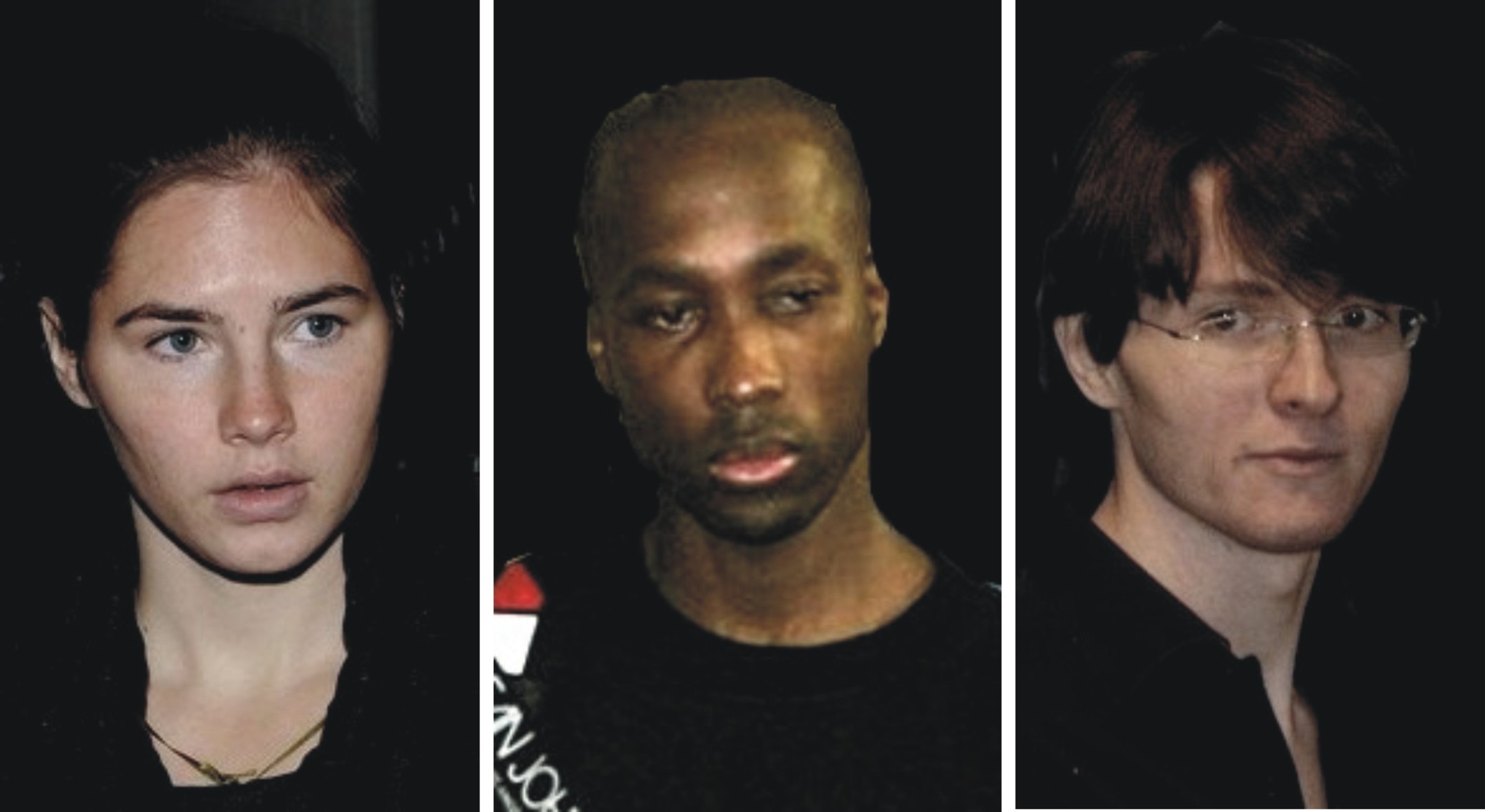
It seems Judge Hellman has begun sweating.
Maybe Judge Hellman already sees as much of the Italian public and commentators do that he’ll have a REALLY tough time answering all the open questions in his December sentencing report as he is required to.
Constitutional requirement of Ministry of Justice never met?
That so many questions exist but are not generally even known about, especially in the US and UK, is because a key requirement of the usually very careful Italian justice system seems to have been (illegally) ignored.
The key requirement is built into the justice system by the Italian constitution. It is that trial and appeal sentencing reports MUST be made available to the maximum extent, so that the general public (usually only the Italian public) can readily check on the legitimacy of trial outcomes.
Italy is the only country in the world that has that public check and balance on trials. Under that requirement, if it existed in the US, Barry Scheck of the US’s Innocence Project would likely find that most of the travesties of justice his team uncovers would never have happened in the first place.
Here is how things are meant to work.
Back when the Micheli Report on the Rudy Guede sentence was released in January 2009 with Judge Micheli’s reasons for remitting Knox and Sollecito to trial it was released in THREE formats.
- 1) It was released digitally (in a Word Doc) to the media with the one requirement that it not be posted in full. We translated most of our copy and posted an extensive summary (scroll down) in English in four parts (three by Brian and one by Nikki) in September 2009.
2) It was released in printed document form by the Ministry of Justice in Rome and anyone in Italy could buy a copy.
3) It was also posted on the website of the Ministry of Justice in text and Acrobat document format. It appears that this Internet version was checked out by hundreds of thousands and quite possibly even by millions.
Now when the Ministry of Justice in Rome released the Massei sentencing report for Knox and Sollecito (links at top of this page) in March 2010, they released it in only ONE format.
The Ministry of Justice released it ONLY on paper, and it was obtainable ONLY by the press and by those in the general public who managed to figure out how to buy a copy of the book-sized document from the Ministry.
To our knowledge the Ministry of Justice never ever posted the required Internet version.
The effect of this serious and seemingly illegal shortfall by the Rome Ministry has been that even in Italy few people have ever read the Massei Report. The number of Italian readers might be only in the hundreds and at most in the low thousands. Way, way less than ever read Micheli.
As a result only very few people in Italy may have ever realized how powerful, logically complete and conclusive that report is. Probably few or no peers of the lay judges in Perugia have ever read it. The most important document in the entire case is essentially unread.
In August 2010 a PMF team finished translating the Massei Report and made available the Masssei report in English in Acrobat format on the PMF forum and on TJMK.
In June 2011 Skeptical Bystander and a PMF team posted a Massei summary in text on TJMK and PMF.
This English language version has been downloaded close to 30,000 times and there are many people in the US and UK who are very well informed on the conclusions. Every lawyer we know who has read the report has agreed that it arrived at the right conclusions. Many say and several do right here in these posts (scroll down) that the case would have been way more than enough for a US or UK conviction.
A slam dunk in effect. Evidence overkill.
But few of the busy people in the US and UK media have read the Massei Report and no one in the media to our knowledge has extensively analyzed or quoted from it. None of the books out so far go into the Massei Report in depth.
WHY did the Italian Ministry of Justice fail to fully distribute the Massei Report, and in particular not post it on their website? And is the Supreme Court of Cassation aware of this huge shortfall in its distribution?
This is such a serious mistake that our Italian lawyers believe that the Supreme Court or even the President of the Republic of Italy if he is petitioned could throw out the entire Hellman proceedings, verdict and sentence.
The hundreds and hundreds of open questions
Arising from the Massei Report are literally hundreds of questions for the released defendants and their teams. They have been around since early 2010. The defense teams and PR campaign have never ever tried to answer these questions, or for that matter to produce a convincing alternative scenario that hangs together implicating Guede but not Knox or Sollecito.
Here are four lists of the many, many outstanding questions.
- 1) Kermit posted this list of 150 questions for the prosecutors to put to Amanda Knox halfway through the trial in 2009. Still unanswered.
2) The TJMK Main Posters submitted several hundred questions to the Italian MP Rocco Girlanda in November 2010. Still unanswered.
3) Main Poster and trial lawyer SomeAlibi posted a list of 25 outstanding questions in this post in February 2011. Still unanswered.
4) And now the Daily Beast has reposted its own list of ten questions, none of which it reckons have yet been answered.
Here from the Daily Beast are those ten questions with the Beast’s annotations showing how they are STILL unanswered:
1. Why did you and Raffaele Sollecito turn off your cell phones at the same time the night of Nov. 1, 2007, and on again at the same time the next morning? You told the police that you and Raffaele slept late the morning of Nov. 2, 2007, but phone records show that you both turned your phones back on very early that morning. How could that be? This question was never addressed fully in the appellate process except when Giulia Bongiorno for Sollecito said that perhaps the cat stepped on the phone and turned it on. At that time the prosecutor Manuela Comodi quipped, “I’ve got a dog and he has never done that.”
2. Why were you bleeding? Your lawyers agree with the prosecution’s findings that at least one of the spots of Meredith’s blood found in the house where she was killed had your blood mixed with it. Your mother told me that you had your period. Your stepfather told others that your ear piercings were infected. Which was it? Even if this mixed blood drop is contentious in its genetic makeup (all blood or blood mixed with DNA), the appellate court was shown a picture of a drop of blood attributed entirely to Knox on the faucet.
3. Once you realized your mistake in blaming Patrick Lumumba for Meredith’s murder, why didn’t you tell the authorities? You told your mother that you felt bad about it, so why didn’t you alert an official so Patrick could be set free?
4. Why did you go with Raffaele to the police station on Nov. 5, 2007? You were not called in for questioning. Did you realize at that time that you were both under suspicion?
5. Why weren’t your and Raffaele’s fingerprints found in your house after the murder if the two of you had spent time there that morning and the day before? Only one half-print on a glass in the kitchen has been attributed to you, yet you have claimed that you took a shower there that morning. How did you spend so much time there and leave virtually no trace? Much of the crime scene has since been determined to have suffered from sloppy investigative work, meaning the absence of fingerprints in any room of the house may be due to that rather than any sort of cleanup.
6. Why did you take the mop and bucket from your house over to Raffaele’s house? You told the prosecutor during your testimony in June 2009 that you took the mop and bucket to his house to clean up a leak under his kitchen sink. But by your own testimony, the leak was minuscule and could have been easily cleaned up without it. What were you really doing with the mop?
7. What would you do differently if you had a chance to rewind the clock back to Nov. 3, 2007? Would you go to the memorial service for Meredith? Would you still have gone to the police station with Raffaele? Would you have left for Germany when your aunt asked you to?
8. What do you think happened the night Meredith was killed? You have professed your innocence. Who do you think killed her and under what circumstance? Your supporters say Rudy Guede was the lone killer. Do you agree? Or do you think there are still others out there who were involved in your roommate’s murder?
9. What do you really think of the Italian justice system? You told an Italian parliamentarian that you got a fair trial, and you even thanked the prosecutors for trying to solve the mystery of Meredith’s death, but your supporters at home in Seattle maintain that the Italian system is corrupt and unfair. In your appellate hearing you said you lost faith in justice and the police. Now that you are out, what do you really think of the system that has both convicted and acquitted you?
10. Is there anything you wish you would have said in court during your (initial) trial (in which you were convicted)? You talked about your vibrator and about how you did not want an assassin’s mask forced on you. But in your final appeal after the closing arguments on Dec. 4, 2010, why didn’t you say the words, “I did not kill Meredith Kercher”? Raffaele did when it was his turn to speak. Why didn’t you? You have said on many occasions during the appellate trial that you did not kill her and you have never hurt anyone. This question has been addressed with your denials. What about the rest?
Judge Hellman may be able to answer all of these unanswered questions AS HE MUST under Italian law in his sentencing report. He cannot simply address points defense raised about small parts of it. He must be able to explain the totality of the evidence or his report risks being thrown out by Cassation and a retrial at the first appeal level ordered.
Possibly Judge Hellman might be able to achieve this. But why do we seriously doubt it?
Monday, October 03, 2011
Is The Raffaele Sollecito Defense Team About To Separate Him From A Radioactive Amanda Knox?
Posted by Peter Quennell
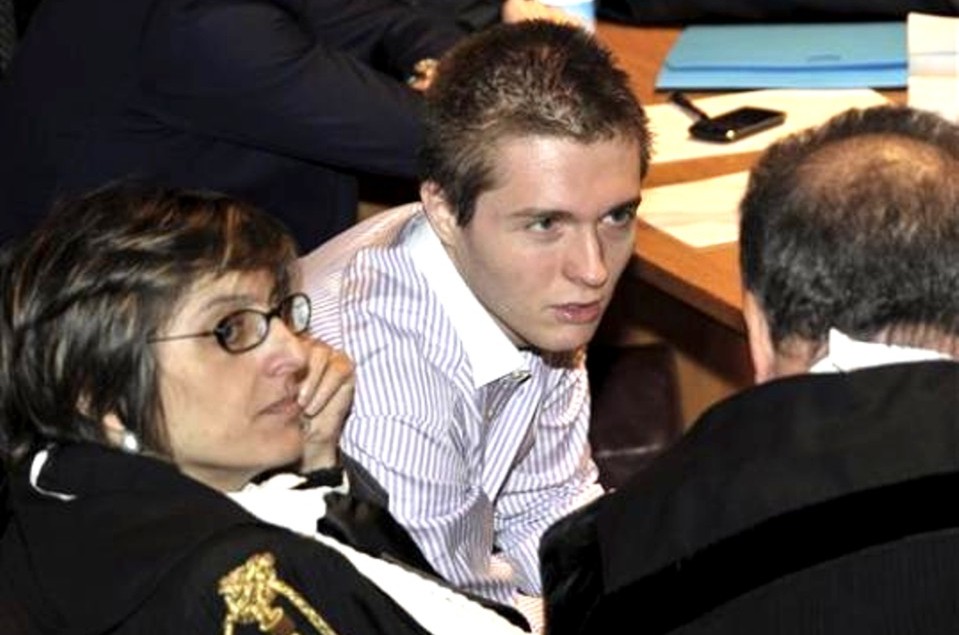
Sollecito has at least five advantages over Knox in what may be the final day of court tomorrow.
First, the smartest and most influential of all the lawyers in MP Giulia Bongiorno. Second, a relatively attractive family which has run a low-key smiling campaign. Third, relatively little evidence (the bra clasp and footprint) placing him at the scene of the crime and unlike Knox no alibi that says he was there.
Fourth, no obvious motive for either the murder or the cleanup compared to the many possible motives for Amanda Knox. And fifth, a weak wishy-washy personality on which Bongiorno has already played, casting Knox as the lead player in the drama and Sollecito as either accidentally there or not at all.
The mood does seem to be moving against Amanda Knox now as the extreme arrogance of the million dollar campaign sinks in. And if her “spontaneous” remarks to the court tomorrow follow her usual pattern, they will yet again make her look callous and concerned only about herself.
Several reports are out now in Italian harking on these themes. This report by the Associated Press with a possible nudge from the Sollecito team gives a sense of what the Italian reports are saying.
Even in Sollecito’s native Italy, it is Knox who commands the most media attention. Two prominent celebrity and gossip magazines, “Oggi” and “Gente,” put Knox on their covers during the final week of arguments in the appeals trial, and newspapers characterize him as being in the background.
Not even prosecutors have portrayed Sollecito as the main protagonist in the murder of Meredith Kercher on Nov. 1, 2007. According to their version, Sollecito held Kercher from behind while Knox stabbed her and another man tried to sexually assault her. Ivorian immigrant Rudy Guede was convicted in a fast-track trial and saw his sentence cut from 30 years to 16 years on appeal.
Attention during the investigation focused intensely on the two young female roommates as the world and prosecutors searched for a motive. Knox was portrayed as sexually promiscuous and lacking inhibition, while at the same time working hard to support herself and trying to learn Italian; Kercher was depicted as more serious and studious, who had at the end of her life began to chafe at her American roommate’s sloppiness.
The good girl/bad girl dichotomy drove headlines across the globe, while Sollecito “” the mild mannered boyfriend “” was largely overlooked in a supporting role.
It’s a role that his defense lawyer plays up. Sollecito is the son of a wealthy doctor from southern Italy who hired a crack legal team to defend his son. It’s led by Giulia Bongiorno, who defended former Italian Premier Giulio Andreotti on charges of mafia association.
“It’s not by chance that Raffaele arrived in this trial as the boyfriend. Nothing connects Raffaele to the crime,” Bongiorno said in her closing arguments last week. “With a girlfriend, you usually get a family. Raffaele got a murder.”
She said the few pieces of evidence in the “Amanda-centric” trial relate to Knox, not to Sollecito. “Nothing connects him to the crime,” Bongiorno said.
Million Dollar Campaign And American Media Come Under Intense Ridicule By An Influential Italian
Posted by Tiziano
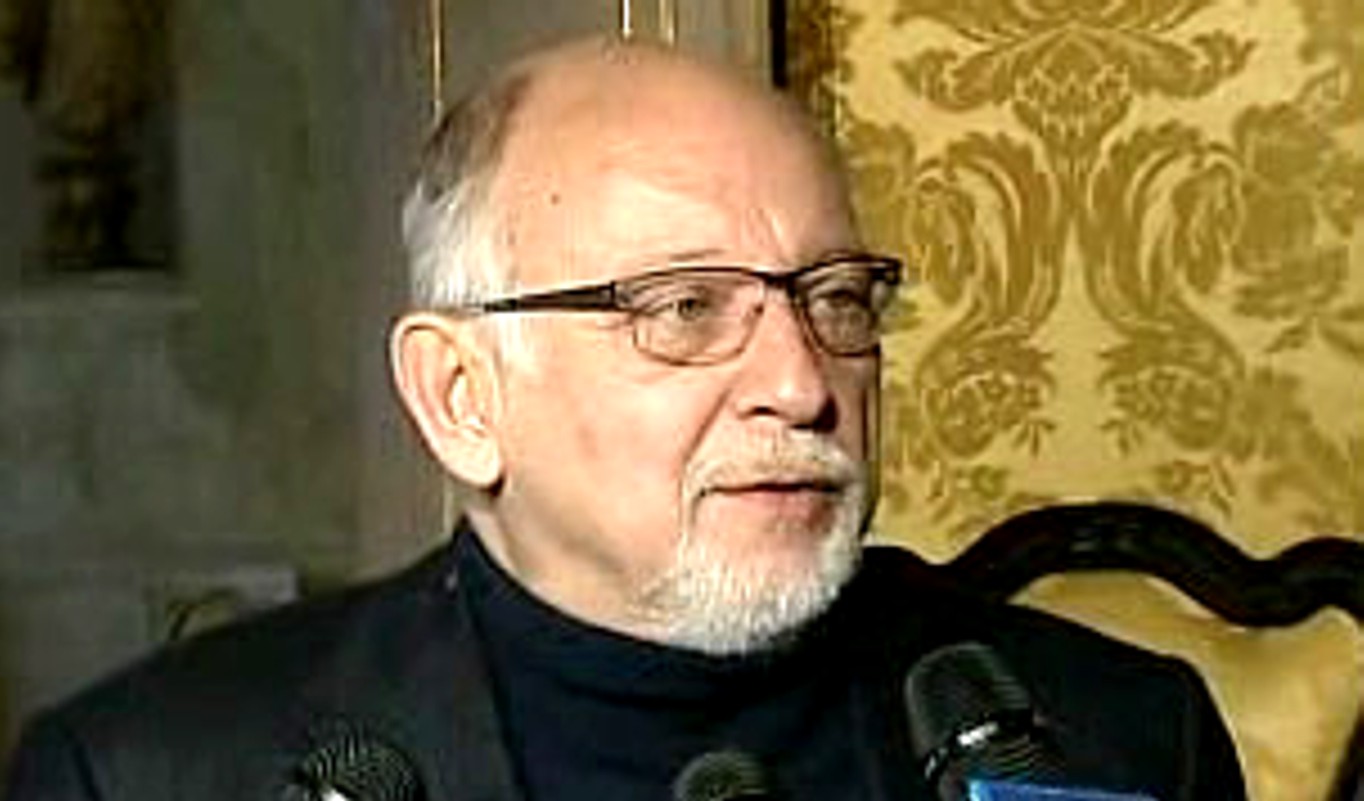
Vittorio Zucconi is the US editor of the major daily La Republicca and lives in Washington. He has more influence over Italian perceptions of America than any other. This is translated from the Italian.
A few hours from the verdict, America is in a trance over Baby Amanda - she is the girl from the golden west, an innocent victim of the wicked witches of the east, the ones wearing the robes of the Perugian judges - now awaiting the happy ending that everyone is expecting, which legions of correspondents and American TV cameras talk about and recount, as if the fate of the west depended upon her release from prison on appeal or on the confirmation of the guilty verdict
By Vittorio Zucconi per la Repubblica
She is the “Girl from the Golden West”, the innocent victim of the wicked witches of the east, the ones who wear the robes of the judges from Perugia. It is a melodrama, sung, played and staged for an American audience which relishes it and avidly follows it like a soap opera or one of those legal thrillers which have made the fortune of of authors like Grisham, Turow and before them Earl Stanley Gardner.
Amanda like Puccini’s Minnie, is the snow-white, naive, extremely innocent girl imprisoned on the wild frontier of the Italian justice system, now awaiting the happy ending which everyone expects, which legions of correspondents and TV cameras tell of and which are preparing to recount as if the fate of the West depended on her release form prison on appeal or on the confirmation of her guilty verdict. And which networks like the ABC are already selling for $7.99 to be downloaded to I-pads and tablets.
Such a show of strength, such a shelling out of money on the part of “news organisations”, all now very careful down to the last cent in bad times, about a legal case the like of which has probably not been seen on the other side of the Atlantic since the trial of historic importance of Adolf Eichmann.
Yes, the monster of the SS, the brain and the accountant of the Jewish genocide. Live satellite coverage is expected for the imminent sentence to be pronounced by the Appeal Court and daily services will broadcast, especially those for the morning shows, those desperate housewives, for mothers who have children anxious to escape from the boredom of suburbia, the same old routine of high school parties to fly far away for new experiences, as Amanda dreamed.
The one whom the British tabloid press straight away stained with the nick-name given to her by her soccer team friends, in the football she played as a little girl: Foxy Knoxy, in which foxy means agile, cunning, escaping tackles and not for that “foxy” which, as in Fellini’s Amarcord evokes the arts of an enchantress and insatiable desires. Because while the USA was barracking for Knox, the English cousins were against her.
As well, other than those irresistible ingredients thrown into the cauldron of the morbidity which gains circulation and titillates the worst in every consumer of garbage TV with bombs and horror reconstructions, sex, blood, satanism, the woman with sacrificial lamb and the butcher, in the fury of the American media who throw themselves against this “court peopled with provincial lawyers” (still Rolling Stones which dedicated an extremely lengthy inquest) there is a great repressed and secret desire for vengeance.
There is the repressed rage against that Europe which is always ready with finger raised to accuse American justice of monstrous errors, of inexplicable acquittals (the O J Simpson case), of “puritanical” persecution as is said precisely on our shores, (Clinton crucified for oral sex), of horrible shows, like the arrest and the world-wide shame of Strauss Khan, or the details of the “panties cover-up” - inside or outside? - of the victim of Willy Kennedy Smith, raped on the beach of the Kennedy villa in Florida.
American justice which triumphantly boasts that it is the best in the world, but refuses to recognise that it has sent, and still sends, innocent people defended by useless bar-room lawyers to be executed.
Now swallow this, you supercilious and presumptuous Italians and Europeans. The frenzy of the specials about Amanda is pursued by the satellite nets which have to recuperate their expenses.
CNN, once the authoritative queen of the satellite, yesterday showed a long special on the four years of torments and injustice, with Amanda on show on the site, with her face in the shadow, her fresh-face and prison profile, the “girl next door”, quite different from the she-devil, the satanic female painted by the “baroque” closing arguments (here is another expression which appears in all the reports on the prosecutor, next to “mediaeval”, all that is missing are the Borgias and Machiavelli.)
On the site her face figures in double format in respect to the pallid and sinister image of the jihadist Anwar al-Awaki, killed yesterday, one of the infinite number of aspiring candidates for the succession of Osama Bin Laden. The number of listeners and hits motivates CNN: Amanda is in first place and is beating the terrible terrorists, as well as news on the economy and the stock market, disastrous again.
We are possibly on the way to a second recession, but there is no match, in the ratings, for that travesty, that parody of justice, put in place against the girl from the golden west, martyred in Perugia.
It is a thought that will print books, burn DVDs, work video-recorders to see once more the specials of CNN, Fox, ABC, CBS, MSNBC, local broadcasters, which have exalted as a hero, the blogger from Perugia who was sceptical from the first day. And the first network which succeeds in obtaining - or buying - the truth from Amanda, the “accidental murderer” who was dreaming of the view of Umbrian cypresses and who saw the prison bars of Italian justice, will be transported to the stars.
‘Is it true that you are always dreaming of sex?” the prison guards would ask the girl, according to her diaries, also printed greedily by Time. True, false, it doesn’t matter. Amanda is a victim, a woman, a little girl, and the verdict has already been issued here. An America, year in year out accused of being an executioner by anti-Americanism, even when its own symbols are collapsing, can finally call itself, this time, the victim. Today, here, we are all Amanda.Knox.
Wednesday, September 14, 2011
A New Book Explains The Unfruitful Emergence Of More And More Conspiracy Theories
Posted by Peter Quennell
Conspiracy theorists have dismally failed to come up with a plausible alternative theory of how Meredith died.
However, they do keep trying. So do the proponents of literally hundreds of other conspiracy theories, constituting vast amounts of effort probably better spent elsewhere - conspiracy theorists very rarely achieve very much, or do well economically, or rise to the top jobs.
The articles here and here look with skepticism on the 9/11 conspiracy theories which on the tenth anniversary of the twin towers coming down have been pushed hard by the various factions.
Now a new book “The Believing Brain” explains the mental makeup that disposes people to so eagerly believe the worst of our fellow man or our governments: One review in the Wall Street Journal..
In Mr. Shermer’s view, the brain is a belief engine, predisposed to see patterns where none exist and to attribute them to knowing agents rather than to chance””the better to make sense of the world. Then, having formed a belief, each of us tends to seek out evidence that confirms it, thus reinforcing the belief.
This is why, on the foundation of some tiny flaw in the evidence””the supposed lack of roof holes to admit poison-gas cans in one of the Auschwitz-Birkenau gas chambers for Holocaust deniers, the expectant faces on the grassy knoll for JFK plotters, the melting point of steel for 9/11 truthers””we go on to build a great edifice of mistaken conviction….
Mr. Shermer offers a handy guide for those who are confused. Conspiracy theories are usually bunk when they are too complex, require too many people to be involved, ratchet up from small events to grand effects, assign portentous meanings to innocuous events, express strong suspicion of either governments or companies, attribute too much power to individuals or generate no further evidence as time goes by.
The increasingly shrill posts appearing daily on the website Ground Report seem to mark pretty high against that list. Could the Evil Mignini have engineered even this?
Oops. Another conspiracy theory in play.
Saturday, September 10, 2011
Conspicuous By Their Absence Now: Legal Commentators For Sollecito And Knox
Posted by Peter Quennell
There is a marked sharp contrast now between how various reporters without legal backgrounds and various real lawyers are seeing the state of play in the appeal.
The post below shows how flavor-of-the-month reporters like Nick Pisa are still reporting happy talk from Knox and her entourage, while, within their professional constraints, we see more and more lawyers realisng Sollecito and Knox really are cooked.
Half a dozen of the main posters on TJMK who are lawyers (they identify themselves as such when they post) have explained how tough is the real case. Various Italian lawyers continue to offer us insights and tips from Perugia and Rome. And we continue to see maybe half a dozen lawyers a week getting in touch by email or signing up, a trend that shows no sign of fading out.
In contrast all of the lawyers and legal commentators who were once suggesting the process in Perugia had taken a wrong turn have gone quiet, and no new legal voices for Solllecito and Knox are speaking up. The CNN legal shows devote almost no air time to the appeal, and Geraldo Rivera, Dan Abrams, John Q Kelly, Lis Wiehl and others have wound down their commentaries to brief equivocations or nothing at all.
Ted Simon who is believed to be still on the Mellas-Knox payroll seems be operating only from very deep cover. Knox’s own lawyers pass on the (to us sad) happy talk from Capanne while themselves sounding very cautious and down.
And the former lawyer and political commentator Ann Coulter who does us the peculiar favor of including us in her definition of right wing is starkly declaring that the increasingly small number of increasingly shrill non-lawyers for Sollecito and Knox really should get a life.
By now, the only people who believe Knox and Sollecito are the usual criminal apologists and their friends in the American media.
Serial smearer and evidence incompetent Steve Moore as one of the usual criminal apologists?! That has to hurt.


